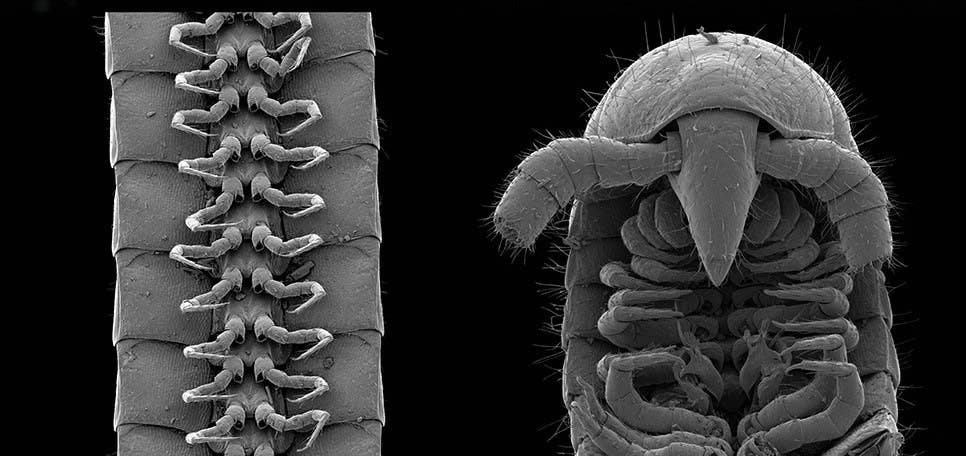First millipede with more than 1,000 legs discovered
The millipede has 1,306 legs — more than any other animal — and belongs to a new species that has been named Eumillipes persephone.

[Dec 17, 2021: Scientific Reports]
The leggiest animal on the planet, Eumillipes persephone, from Australia. Ventral view of legs and dorsal view of head and ventral view of gonopods. (CREDIT: Scientific Reports)
The discovery of the first millipede with more than 1,000 legs is reported in Scientific Reports this week. Prior to this, no millipede had been found with more than 750 legs.
Paul Marek and colleagues discovered the millipede 60 metres underground in a drill hole created for mineral exploration in the mining area of the Eastern Goldfields Province of Australia. It has 1,306 legs — more than any other animal — and belongs to a new species that has been named Eumillipes persephone.
The millipede’s name derives from the Greek word eu- (true), the Latin words mille (thousand) and pes (foot), and references the Greek goddess of the underworld, Persephone.
The leggiest animal on the planet, Eumillipes persephone, from Australia. Female with 330 segments and 1,306 legs. (CREDIT: Scientific Reports)
The authors measured four members of the new species and found that they have long, thread-like bodies consisting of up to 330 segments and are up to 0.95mm wide and 95.7mm long. They are eyeless, have short legs, and cone-shaped heads with antennae and a beak.
Related Stories:
Analysis of the relationships between species suggests that E. persephone is distantly related to the previous record holder for the greatest number of legs — the Californian millipede species, Illacme plenipes. The authors suggest that the large number of segments and legs that have evolved in both species may allow them to generate pushing forces that enable them to move through narrow openings in the soil habitats they live in.
The findings highlight the biodiversity found within the Eastern Goldfields Province. To minimise the impact of mining in this region on E. persephone, the authors advise that efforts should be made to conserve its underground habitat.
Note: Materials provided above by Scientific Reports. Content may be edited for style and length.
Like these kind of feel good stories? Get the Brighter Side of News' newsletter.
Tags: #New_Discovery, #Millipede, #World_Record, #Worm, #Science, #Research, #Legs, #The_Brighter_Side_of_News



